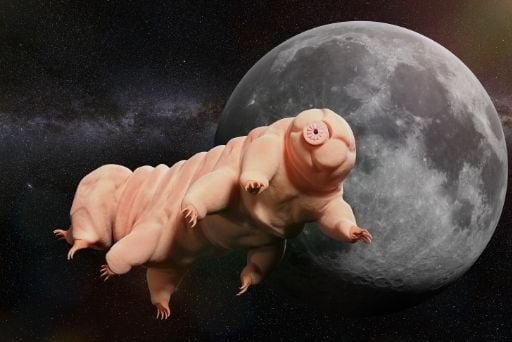Tardigrade: Everything you need to know about it
They have a very curious body, long and plump, and a wrinkled head (they measure less than a millimeter). They have eight legs with four or eight claws on each leg. Although strangely beautiful, these small animals are almost indestructible and can even survive in outer space.
Do you want to know more about these extremely small animals? Let’s get started!
- History of tardigrades
Tardigrades, also known as “water bears” are almost microscopic, multicellular organisms and one of the most durable life forms on planet Earth.
Tardigrades were discovered by the German zoologist Johann August Ephraim Goeze in 1773, who initially described them as “water bears”. The Italian scientist Lazzaro Spallanzani coined the term “Tardigrada”, which literally translates as “slow step by step”. It was originally an adjective applied to turtles, but since 1800, it has been the name for these microscopic creatures. Shortly after their discovery, scientists discovered that tardigrades have the ability to revive after dehydrating for decades.
Although strangely beautiful, these small animals are almost indestructible and can even survive in outer space.
There are more than 1,000 known species of tardigrades. There is no doubt that they are one of the most fascinating creatures on the Earth. The mysterious microscopic creatures have landed on the lunar surface in what looks like the beginning of a science fiction movie. But they are not there as part of a hostile takeover, but rather by chance.

In April 2019, the Israeli Beresheet spacecraft bound for the moon crashed due to a computer error. Scientists loaded tardigrades onto Beresheet along with human DNA samples. When the lunar lander crashed, thousands of dehydrated tardigrades could have been scattered on the surface of the moon.
When the tardigrades are in a dormant state, they shrivel into a ball, expel most of the water in their bodies, and reduce their metabolism through cryptobiosis until they enter an environment more suitable for sustaining life. They can exist like this for decades. They are also quite hardy and can withstand the most hostile environments. Is there anywhere they couldn’t live?
Tardigrades can survive pressures comparable to those created when asteroids hit Earth, so a small shock like this is nothing to them.
So, what does this mean for humanity? Well, it depends. If humans are able to replicate cryptobiosis as tardigrades do, we would live much longer than the current average lifespan of 70 years.
When a tardigrade goes into the desiccated state, it does not age. It becomes inactive and can wake up years later and biologically it would be the same age.
- Where do tardigrades live?
There are certainly tardigrades in a wide variety of different environments. They have been found from mountain tops to deep sea and mud volcanoes. They live in lichens and mosses, but these are not the only habitats in which they can survive. Other places they live include dunes, beaches, soil and leaf litter. Scientists have also discovered them at the top of the Himalayas, at altitudes of 6,000 meters, and at the bottom of the ocean, at minus 4,000 meters. So, water bears can live almost anywhere, as they can survive in a wide range of temperatures and situations.
- They don’t care about climate change
They have an amazingly sophisticated system for surviving total desiccation. A study has revealed details of how they withstand totally dry environments even for a decade, to revive within a period of one hour of exposure to water. This impressive trick is possible because they possess unique and exclusive proteins, called tardigrade-specific intrinsically disordered proteins (TDPs). The amazing thing is that when the animal is completely dissected, the TDPs vitrify, turning the cytoplasmic fluid of the cells into glass. The discovery shattered the belief that tardigrades survived dehydration thanks to trehalose, a disaccharide that does a similar task in tree frogs.
- Special properties
Most creatures are not able to survive a dehydration process. Life without water is almost impossible. But tardigrades are nothing out of the ordinary.
Water bears, which also have the endearing nickname of moss piglets, can come back to life decades after being dehydrated. Scientists have discovered that tardigrades have what seems almost like a superpower. When they dry out, they retract their heads and their eight legs, crumple into a small ball, and enter a deep state of suspended animation that looks very much like death.
They expel almost all the water from their body and their metabolism slows to 0.01% of the normal rate. The upside is that, if they get back in water, even decades later, they can come back to life.




